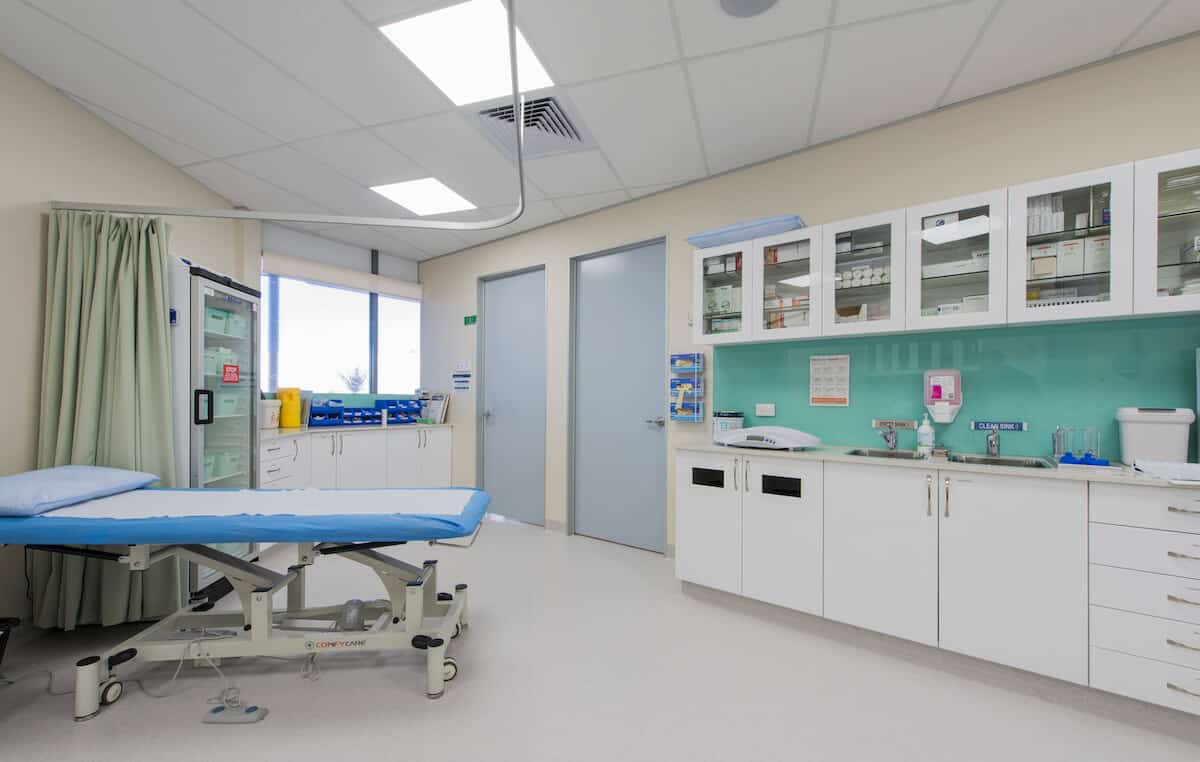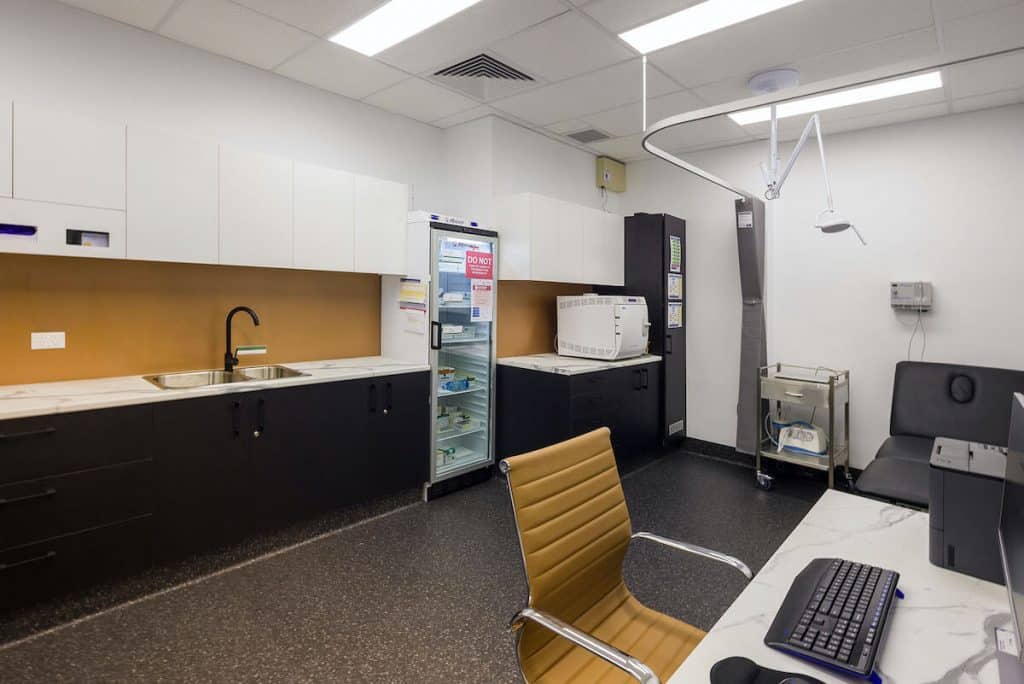Treatment Room Design For Your Medical Centre

The treatment room plays an important role in a medical practice’s operations. As such, it’s important that its design is fit-for-purpose to ensure an efficient clinic workflow and positive patient experience.

We explore the key design elements to consider when planning your medical centre’s treatment room.
Layout
The design layout of your medical practice’s treatment room should offer some flexibility for changing needs. So it’s important to allocate a little more space than you may initially require. When deciding how many examination beds you need in the room, think about your expected patient numbers and the type of procedures and tests you will be performing on a regular basis.

The next step in the planning stage is to create your clinic layout. Consider what equipment you will require in the room so space can be allocated, as well as the positioning of your sterilisation area, nurse’s workstation, sinks, medication fridge and waiting chairs.
Comfort and Privacy
For the comfort of your patients and staff, the treatment room should be free from excessive noise and maintain a comfortable ambient temperature. Simple but important items for patient comfort include privacy curtains and additional seating for visitors.
Lighting
Lighting in the room needs to be a mix of task and ambient styles. Lighting above the examination beds should be bright enough – yet without shadows – to provide good visibility when performing more intricate procedures. LED lights that offer a wide adjustable light field, such as dimming in individual examination areas, are popular options. They can also be ceiling-mounted or on caster bases for maximum moveability.

Storage
Including multiple storage options for your treatment room – while still maintaining as much floor space as possible – will provide you with plenty of flexibility. Open shelving or divided drawers are great options for storing everyday items such as wound dressings. You can also keep smaller items in mobile cabinets or carts to give you the option to move them around as required.
It’s important that your cabinetry is easy to clean – both inside and out – and is made with materials that will withstand a clinical environment.

Lockable storage is definitely a ‘must have’, for clinical supplies, medication, and hazardous materials.
Flooring
Vinyl is the most popular material for treatment room flooring. This flooring material is available in a large sheet form and is almost seamless once installed, with it coved as a skirting to walls and joinery. This is a very cost-effective option, as it also offers excellent durability and is easy to clean.
Sterilisation Area
If you plan to sterilise your instruments and equipment onsite, then you may choose to co-locate a sterilisation space in the treatment room. When designing this area, compliance with Australian Standard AS/NZS 4815:2006 is of course a must. The Standard specifies the rules and guidelines for reprocessing reusable instruments and equipment in “office-based healthcare facilities”.

To create a dedicated sterilisation space, you will need sufficient bench space and width in your treatment room to hold required equipment such as your steriliser. Your bench’s surface should also be uncluttered and easy to clean. Well-planned storage, lighting and ventilation are also key.
Learn More
Thinking of opening or refurbishing a medical centre? Our in-house architects can help you with the design of your entire medical practice. To learn more, call us today on 1300 765 344.
- Category :
- Type :